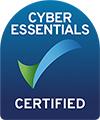What are the three types of water quality monitoring?
The three parameters that assist in water quality monitoring and measurement include physical parameters, chemical parameters and biological parameters. Physical parameters consist of taste, colour, odour, temperature, turbidity, solids and electrical conductivity. Chemical parameters include pH, acidity, alkalinity, chlorine, hardness, dissolved oxygen and biological demand. And biological parameters include bacteria, algae and viruses.
Why do we need water quality monitoring?
Through water quality monitoring, you will become aware of any existing and potential problems with the quality of your water, enabling you to rest assured that you are complying with drinking water regulations. It’s important for a number of reasons from protecting public health, aquatic life and ecosystems to managing water resources effectively and tracking changes in water quality over time.
What are the 5 water quality tests?
Temperature – water temperature can affect many water quality parameters, including the dissolved oxygen content, pH, and organisms living in the water.
pH – pH measures how acidic or alkaline water is. A minimum pH level of 6.5 and a maximum pH of 9.0 is required for healthy drinking water according to UK drinking water regulations.
Turbidity – turbidity refers to the haziness of water and determines water clarity. High turbidity can be the result of algae, clay or silt leading to cloudy water.
Salinity – salinity accounts for dissolved salts in water which is important for both freshwater and marine ecosystems.
Nitrates and phosphates – these are essential nutrients for plant growth and contribute to algal growth in rivers, lakes and estuaries.
What tool is used to test water quality?
We use a range of tools to test water quality, depending on the specific parameters being tested. These include Multiparameter sondes, Online instruments, Level and flow sensors and Autosamplers.
What is continuous monitoring of water monitoring?
Continuous monitoring of water quality is the process of generating and analysing data on water quality parameters continually. It involves monitoring for events or trends over time to determine baseline parameters and track changes in water quality. Continuous monitoring is typically done using automated sensors that are deployed in the water body of interest.
What is infrastructure monitoring?
Collecting and analysing data from remote infrastructure to assess its condition and identify any potential problems is known as infrastructure monitoring. This can include monitoring bridges, roads, dams, railways and power lines. It involves acquiring real time images, water level, flow, rainfall and weather conditions to provide a comprehensive suite of data which can be used to assess conditions and events on site.
What is an example of infrastructure monitoring?
Water and sewerage companies are installing Meteor MRC remote cameras at an increasing number of wastewater discharge and storm overflow locations; primarily to check the veracity of event duration monitors (EDMs), but also to avoid unnecessary site visits, save costs, lower the carbon footprint of operations, and help identify the sources of pollution.
What are 4 methods of monitoring?
Remote monitoring – collecting data from remote or difficult-to-access locations through a variety of technologies, such as low-power cameras and environmental sensors.
Real-time monitoring – gathering and analysing data on a continuous basis.
Predictive monitoring – using data analytics to predict potential problems before they occur.
Condition-based monitoring – monitoring the condition of assets and scheduling maintenance activities based on that condition.
What are the advantages of remote sensing in water quality?
Remote sensing will provide real-time data, allowing for more timely responses to changes in water quality. Monitoring the brightness and colour of water bodies allows you to identify changes in the amount of pollutants in the water which could be caused by seasonal changes or human activities.
What kind of tools are used to monitor water quality?
Continuous monitoring stations, sampling and data analytics.
How is water quality monitored in rivers?
While there are various ways to monitor water conditions, water quality monitors sample the chemical condition of water and continuous monitoring stations measure a variety of water quality parameters on a continuous basis. Data analytics tools are used to analyse the samples and continuous monitoring to track changes in water quality.
How do you test river quality?
Meteor Communications’ continuous monitoring stations are deployed in rivers at strategic locations, such as near bridges, dams, and wastewater treatment plant outfalls. In order to assess river water quality, these stations measure temperature, dissolved oxygen, pH, conductivity, turbidity, and ammonium on a continual basis.
How do you measure river water levels?
Pressure transducers are employed for the measurement of water level. They are devices that convert pressure into an electrical signal and are typically submerged in the river and transmit data to a central monitoring station in real time. The pressure transducers used by Meteor Communications are designed to be accurate and reliable, even in harsh environments.
How do you measure river depth?
Pressure transducers are designed to measure water pressure, using the information to calculate the depth and level of the water. The transducers are typically submerged in the water and can be used to measure the depth of rivers, lakes, and oceans.
Can’t find what you’re looking for? Get in touch with us today, for all your water quality monitoring needs.



